Fred's world tour
Week 9 – Santiago and Easter Island, Chile
24th until the 30th of November 2012
In brief:
-
Visit the 'Museo de la memoria' and be horrified at what occurred in Chile during the dictatorships.
-
Go on a good old fashioned bar crawl for the first time since Buenos Aires.
-
Fly to Rapa Nui (Easter island) and watch the sunset behind the Moai statues of Tahai.
-
Rent a mountain bike to explore caves, rugged coastline and the volcanoe Rano Kau.
-
Walk around the petroglyph infested ceremonial village of Orongo.
-
Explore the island by bike going up the highest volcanoe Terevaka.
-
Venture along the most bike-unfriendly area that is the north-west of Easter island.
-
Bike the length of the east of the island up to the north and marvel at the Maoi carving site of Rano Raraku.
-
Take a dip in Anakena beach where 1300 years ago Polynesians arrived in canoes.
-
Buy souvenirs and awe at the huge pacific turtles coming into the fishing port.
-
Go to a 'cafe con piernas' (coffee-shop with legs) on my last day in Latin America.
My 9th week was the week I had been looking forward to doing since I was about 13year old when I first heard about the mysterious Maoi statues of Rapa Nui (Easter Island). However, I first had a full day in Santiago before my flight. I started it by walking around the traditional plazas and parks of the area near the hostel, Barrio Brazil. I was making my way to the 'museo de la memoria' according to the tour I did it was a 'must do'. Nothing really prepared me for what this museum had in-store for me. I knew about the dictatorships that plagued Chilean history and that those that opposed the regime saw their freedom or lives taken away. On the other hand I had no idea of the scale of it and how extreme it was. This museum documents it all from start to finish. At the entrance they had lists of the gross human rights violations that occurred all over the world and Chile's one was no exception. The museum depicted with audio-visual splendour the events and some were very graphic indeed. Last time I felt this uncomfortable and with a shocked look on my face the entire time I was on a school trip to a concentration camp in Germany! The ending was uplifting and filled with songs, video clips and photos of celebrations nevertheless I couldn't help feel very subdued at the end. The video interviews with some that were tortured was simply haunting and has permanently been ingrained in my memory. What was a bit strange was the live hip-hop and rap concert that was occurring outside the entrance and under the archway of the museum!
With a very hot day manifesting itself I thought it was the perfect opportunity to go back to the hostel to chill by the pool, chat to some other travellers and also pack my bags for tomorrow's flight to Easter island. I also signed myself up for an organised bar crawl of Bellavista, the party district of Santiago. Bar crawls are a great way to meet people, see places at night and sample the local drinks. In this case Pisco and coke or Piscola was the order of the evening among the free shots offered. The theme of the night was 'Grease lightning' the 1980s film with John Travolta. I was however, completely surprised when the organisers were puzzled by the T-Birds logo I had written on my arm and on the back of my shirt! After all, its the name of John Travolta's gang in the film! Despite this, the night out was great fun and ended around 6am leaving me 3hours sleep! Chileans know how to party.
Nothing could cause me to oversleep on Sunday the 25th of November 2012, for today I was catching the 5hour flight to Easter island! Like a little child I get very excited at air travel but this time it was extra special. The flight literally flew by, there is nothing I like most on a plane than to watch movies and seeing as I had been deprived of Hollywood films for the last 9wks it was bliss. Two and a half movies into the flight we were flying over the island before turning to land. Upon arriving I walked my way to the hostel seeing as it was only two blocks away. Unfortunately for me it wasn't located where the website indicated. It took a local builder in a pick up truck to offer me a lift to the hostel for me to realise where it was. Upon arrival it turns out the hostel has a meet and greet service that I'd managed to completely bypass at the airport arrivals. Oops.
I was checking in at the same time as a multilingual German called Sebastian that works in London so we spend that afternoon exploring the centre of town together. That's where we would eventually find our first Maoi statue with its back to the sea and facing the village. Moai are placed in this way as they would always be made to overlook their village. Naturally next to that there was one that contradicted that but turns out it was cemented in this way by a misinformed well intended person. From there we walked north-west of town to the Maoi platform of Tahai. This is where all guidebooks say you have to see the sunset from and so we did. No better way to end the first day... except if you count the delicious fish pie we had in a restaurant that evening with another guest of the hostel.
The next morning I had to get some well deserved sleep to recover and to be in perfect form to see the island. Seb on the otherhand took up the opportunity to go see the sunrise on the other side of the island with three Argentinians that had rented a car. Unfortunately for them they missed the very start of the sunrise but it does mean they will be going again on Wednesday when I could join them. When I finally arose I went walking to some bike/car rental places and tour operators. I was convinced by a mountain-bike rental company who said that the island was explorable by bike because its only 20km in diameter and all I needed was a book. This book was written by the linguistic author and Rapa Nui resident from Scotland, James Grant-Peterkin. It explained all there is to know about the island and the ruins. Although tours are all encompassing going without a tour guide would make for a more pleasurable experience. Not only that but I was given a good offer on the bike rental too. Next thing I knew I was off exploring south from the town centre along the coast with a book, water and some bread rolls in my backpack. I stopped at various places en route that tickled my fancy and that the book recommended. I got to see Maoi statues, supreme caves with cave paintings and beautifully rugged volcanic coastline en route to the volcano Rano Kau.
The volcano trekking path seemed achievable by bike so up I went meeting plenty of hikers on their way down including Michael the Australia from the Hostel. From the top the view was spectacular. The main town of Hanga Roa on one side and a crater lagoon on the other. The lagoon was apparently one of the sources of fresh water for the locals. It is now now teeming with flora and fauna. Incidentally the reeds in this lake (scirpus californicus) are the same as those found on the floating islands of lake Titicaca in Peru. The soil in this crater was also, interestingly enough, the source of the immunosupressant drug Rapamycin discovered within bacteria here. This medication is widely used to prevent rejection of organs after transplant, particularly kidneys.
From the crater I biked along the North rim to Orongo the ceremonial village where round, grass roofed stone houses still reside. The great thing about this place is the beautiful view of the sea and the myriad of petroglyphs (carvings in rock) that were simply exquisite to see in the light of the evening sun. I came just at closing time but the guard allowed me in anyway which was very nice. In one of the houses here is where a beautifully preserved Moai was found and then taken to London where is still stands today in the british natural history museum! Odd to think I've seen that Maoi almost 8,500miles away (13,500km) in London and here I stand right where it was taken from.
To end the first full day in Rapa Nui I went to a cultural dance show which involved a lot of shouting and people wearing very jumping around on stage. At one moment I thought the grandmother next to me might be having a heart attack at the thong-wearing Rapanui man! After the show I took a quick picture with the performers and then joined the guys at the hostel for pasta. I was carbo-loading for the next days' worth of epic biking. It was really great to get to know the others and generally have a good chat.
The day started with breakfast with the rest of the gang and then we parted ways me on my bike and they got in their car going in the same direction to climb Terevaka. As you bike you find yourself looking around and double-taking a rock thinking 'could that be a toppled Moai or their Pukao (topknots)?'. There are possibly thousands or archaeologically significant rocks on this island so its a high possibility that it is something worth stopping to look at. My first stop was one such discovery where I caught the glimpse of a head through some trees so pulled up to get a closer look. This was in fact Ahu Huri A Urenga apparently noteworthy for having four hands and for the fact that the statue faces the exact direction of the rising sun at the winter solstice (June 21st). These Rapanuis were a clever bunch!
From there I got back on my saddle and biked the hills to get to Puna Pau a small volcanic crater and quarry for the Pukao because of the red scoria stone. The topknots or Pukao were a later addition to the Maoi culture as there are only 100 in existence compared to the 1000 or so Moai. Although they look like hats they were considered to be more like a representation of the hairstyle of the time. The hairstyle consisted of long hair worn tied up in a bun hence the 'knot' part of the topknot. Each of these bad boys can weigh up to 12 tonnes!
Then on my ride I saw a mountain with three white crosses so naturally I felt inclined to hike up to the top. It turns out early Spaniards declared the island converted to Catholicism by putting these crosses up. Little did they know that as soon as their ships sailed the locals, in view of their wood scarcity, took them down and used the wood. The views from the top were pretty impressive. I could see the volcano Ranu Kau that I biked up yesterday and Terevaka the highest peak on the island that I was heading towards today.
At the starting point of the trail to Terevaka there was the inland platform with seven beautifully restored Moai called Ahu Akivi. I took a break and read my book about this location and also the section about national park preservation rules. Its a given that you should not climb on the platforms or touch the rocks. In the book in mentions that in 2008 a Finnish guy climbed to one of the platforms to take an ear lobe from a Moai! He received 3weeks house arrest in his hotel, $15,000 dollar fine and deportation from Chile. Then, within a few minutes I was shocked to see a guy climb on to the platform at Akivi to get a picture. I shouted in shock and warned of the repercussions but no doubt as soon as I left they would take that 'perfect picture' anyway. Shame.
With time flying by I headed up on my mission to the top of the highest point on the island, the Terevaka volvanoe. At 507 metres high I had my work cut out on my bike. I was expecting to see the others from the hostel walking down because they got there earlier. Instead I met them right at the top of the Volcanoe! Sebastian, Michael, Ariel, Guillermo and Mariana gave me an amazing welcome to the top. It took me 58minutes from start to finish and I was completely shattered so it was nice to see these guys there. They had even acquired a small labrador puppy as a companion that started following them at the start. Very cute thing, it needed carrying some of the way by Ariel (who's nickname was Legolas fitting as he looks just like the Lord of the Rings character). They left me to have some lunch and they made their way back down. After all it would take me seconds to get down by bike. Whoop whoop!
Next I headed east towards some lava tunnels, some of which had caved in and formed caves. The Rapanuis (islanders from Rapa Nui) had ingeniously converted them into banana planting areas, the high moisture and protection from the strong winds made for ideal growing conditions. This wasn't to be my only caves that I would visit. I next went in search of a cave that opens out to the cliff by means of two holes. It took time finding the entrance but I eventually saw a dark hole barely big enough to crawl through and decided this was it. The book recommended a torch but armed with just my camera I used the focusing LED that gave me 2seconds of faint light at a time! Not ideal but I got through the six metres of dark small tunnel which then opened up to a bigger space and then the two exit holes. The book warned of the slippery floor when wet as you could find yourself falling straight out of the exit holes located 30m up from the sea!
By this point it was 4pm and I toyed with the idea of going round the north-west part of the island. From what I heard it was uninhabited, not had a path to speak of, would take 5-6hours to complete and its definitely not recommended to be done alone or by bike..... so... off I went. The allure of plenty of toppled Moai combined with the isolated environment meant that I would be seeing sights very few other people have seen. Those were reason enough for me. My observation and biking skills where put to the test as I would be looking around to try and spot that, Moai, or petroglyph, or foundations of ancient houses. All at the same time as avoiding crashing my bike into the multitude of rocks. I was simply blown away by some of the derelict beauties that littered this side of the island.
The biking got progressively more difficult as more and more rubble dominated the landscape instead of the lush greenery found elsewhere. This therefore turned into a bike carrying adventure the more I progressed. What was also noticeable here was the multitude of cow and horse cadavers around the place in various stages of decomposition. As horses are left to roam free on the island I suppose nature takes its course wherever. Did you know one of the most common causes of road traffic accidents on the island is collisions with horses or cows and you can't get car insurance here! Any damages have to be fully paid by the driver and given that everything is super expensive here because it is all imported I would not like to contemplate the costs involved.
Three and a half hours later, with no more water, no more food left in my backpack and a broken body I reached Anakena beach. A beautiful sandy bay at the north of the island with palm trees and Moai to marvel at. The water was pristine blue but unfortunately for me I had little time to explore today as the sun was starting to go down. I purchased some water from the nearest kiosk that was closing up and then wasted no time in cycling the tarmac road to Hanga Roa (the main town). I was still one hour away from a shower, food and a bed. On arrival back at the hostel I met up with the other guys and went to get some chicken hotdogs or as they call it, an 'As de pollo'. Seb ended up by having two 'Asses' :-) (sorry Seb that was priceless).
A 5:50 wake up call was in order for my penultimate day in Easter island. Seb, Michael, the Argentinians and I were all going to watch the sunrise from the Ahu Tongariki. This location perfect to see the 15 Moai restored to their former glory on a 220m long platform also known as an ahu. This ahu is in fact the largest ceremonial structure anywhere in polynesia. It was restored at a cost of 2million dollars to the Japanese government and a private Japanese construction company. A Moai at the entrance is fondly known as the 'travelling moai' as it was sent to Osaka and Tokyo for trade fairs and returned. The same Moai was also used to test theories of how moai were moved from the site of manufacture to their ahu. The sunrise mas magical and well worth the early wake up.
En route back we saw an overturned car and rushed over thinking people were still inside as it wasn't there when we arrived earlier. Fortunately it was empty, remember what I mentioned about no insurance!! I hate to see the bill for that rental car! After a leisurely breakfast with the gang my third day's adventure was on! I donned the back pack with food, water and cycled to the museum which houses precious artefacts excavated from around the island including an original Moai eye and one of only a dozen female Moai. The eyes are made of white coral and the pupil of red scoria rock (same as the Pukao). From there I swung past the port to see if I could see turtles that the Argentinians spotted yesterday. With no luck off I went to the south-east coast of the island at the base of Rano Kau to see the impressive stonework platform of Vinapu which is often compared to the incas' wall construction. The moai statues here like on the north-west side of the island remain toppled over with their Pukao slighly further after having rolled away.
Then I ventured along the north-east coast towards Rano Raraku stopping en route at various derelict Moai statues and their crumbled ahu. After a while one has to realise that there is only so many pictures that you can take of a rock. This is true right up until you make it to Rano Raraku the quarry for all Moai. Here they are carved face up then lowered into a pit upright so the back of them could get decorated with carvings. They would remain here until transportation to their destined ahu. The hillside of this volcano is home to 397 moai in various stages of carving. Once work at the quarry ceased, time cause earth to bury half or up to two thirds of the Maoi making the hillside look like its littered with Maoi heads. There are plenty of unfinished ones in the rock face one of which measures 21metres tall and would have weighed 250 tonnes had it been completed. Ambitious Rapanuis!
I spent hours walking round this location, admiring and fulfilling my childhood dream of walking with these giant sculptures. My walk took me into the crater lagoon when once again you could see unfinished carved Moai on the inside of this crater. I sat and read my book under the shade of a tree when suddenly a saw a heard of wild horses galloping up into the crater to have a drink from the lagoon. Such an idyllic setting to contemplate things.
With time simply flying by I still had a lot to see and do. My next stop was Ahu Tongariki but this time during the day and there was still plenty to admire. Including the petroglyphs on the rocks and the fragments of damaged moai behind the platform. If you weren't careful you could easily walk across the petroglyphs. They charge 30,000 chilean pesos to visit the national park here which is about £40 per person. However I fail to see what they spend it all on! With more than 70,000 visitors per year paying this amount that is in excess of £2.8million per annum in revenue. Yet I fail to see a small roped off area around petroglyphs or adequate signs along trails like the north-west part of the island. Most if not all Moai currently upright on platforms were either the work of charity or archaelogical funds from foreign countries so where is all this money going to I wonder? It saddens me really because almost if not all of the moai could be restored to their former glory on their ahu. If it took 2million dollars of the Japanese's money to erect 15 moai at Ahu Tongariki imagine what the last 20years worth of national park fee could fund?... Someone made a point in saying 'why would they invest in restoration if they could just pocket the money as tourists are going to come anyway'. Its the sad truth unfortunately.
My bike tour took me back to Anakena this time when I had a bit of time to enjoy it. I saw the statues there, relaxed on the sandy beach and took a swim in the refreshingly cool pacific water. Did you know that this very spot was used as a landing area for the polynesian's double hulled canoes some 1300 years ago? It was the end of the day so I had the beach pretty much all to myself. I didn't go as far as stripping off completely naked unlike my Argentinian counterparts earlier that day! Once I'd recharged my batteries I hit pedal to the rubber and cycled back to the main city in time to return my bike to the rental place. I met up with the gang and then we had a chilled out hostel-cooked group meal to celebrate my last night.
On my last day I caught a glimpse of the huge pacific turtles in the port, brought some souvenirs with the help of Ariel's negotiation skills and tasted some locally made blackberry ice cream. The flight was delayed by four hours so that gave me some more time to say goodbye to the wonderful island and LAN airlines paid for a delicious lunch at a French owed restaurant. Unfortunately because of the delay I arrived at Santiago at 2am in the morning but thankfully LAN also arranged my onward travel to my hostel which was nice.
A long lie in at the Casa Roja hostel and then I met up with Michael (the Australian from Easter island staying at the same hotel in Santiago!) to go and explore the centre one last time. We also went to a 'cafe con piernas' which translates as 'coffee-shop with legs'. Its not a fast-coffee type of place as you may think from the name but it actually means is that the waitresses have a lot of 'leg' showing. When the idea was first devised the coffee was bad tasting and one way to lure clientèle was with the opportunity to set eyes on pretty ladies. This has since escalated to practically a standing-up lap dance from pretty ladies wearing nothing more than bikini bottoms! Of course the amount of clothing varies according to the type of coffee-shop. They range from mild to extreme. All I can say from my experience of a Santiago coffee-shop is that the coffee has since improved dramatically. Google ‘cafe con piernas santiago’ to educate yourself if you wish. Be warned!
To finish an epic 9th week I went out to dinner in Bellavista followed by a Piscola-fuelled and Caipirinha-fuelled night out until 6am! With a 9am wake up, that's plenty of sleep ;-)
Next week I head to Sydney to have some downtime but also focus hard on job hunting seeing as my agency has so far let me down despite saying, 'We are 99% sure we will find you a job in time'. Remind me next time not to rely on agencies.
A big thanks and credit must be given to James Grant-Peterkin's book 'A companion to Easter island' second edition 2012. A must-read book before and during any trip to Easter island. £21 if bought on the island and I'm sure cheaper if bought on the internet before going.
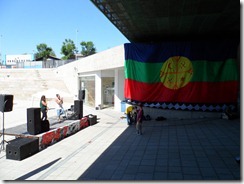
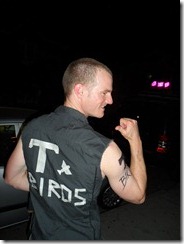
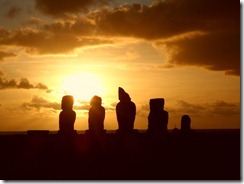
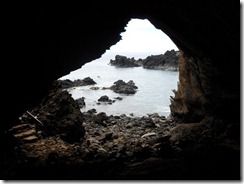
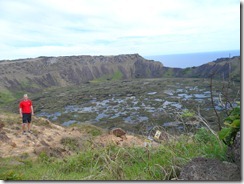
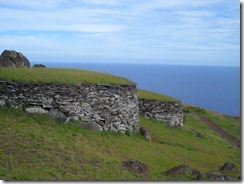
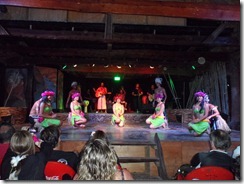
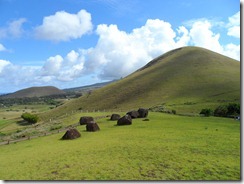
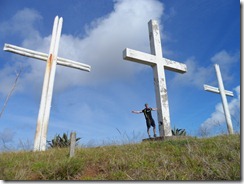
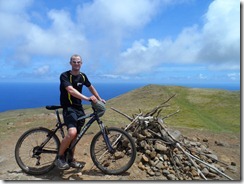
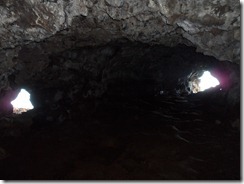
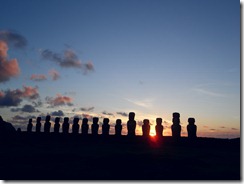
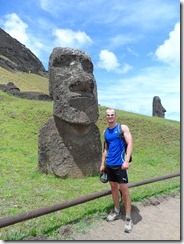
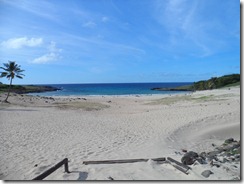
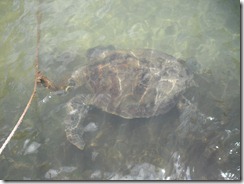
No comments:
Post a Comment